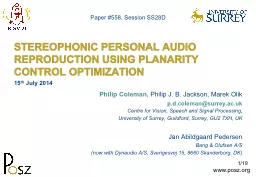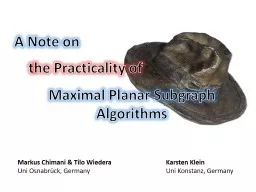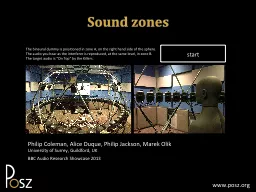PPT-STEREOPHONIC PERSONAL AUDIO REPRODUCTION USING PLANARITY CO
Author : faustina-dinatale | Published Date : 2016-07-20
Philip Coleman Philip J B Jackson Marek Olik pdcolemansurreyacuk Centre for Vision Speech and Signal Processing University of Surrey Guildford Surrey GU2 7XH
Presentation Embed Code
Download Presentation
Download Presentation The PPT/PDF document "STEREOPHONIC PERSONAL AUDIO REPRODUCTION..." is the property of its rightful owner. Permission is granted to download and print the materials on this website for personal, non-commercial use only, and to display it on your personal computer provided you do not modify the materials and that you retain all copyright notices contained in the materials. By downloading content from our website, you accept the terms of this agreement.
STEREOPHONIC PERSONAL AUDIO REPRODUCTION USING PLANARITY CO: Transcript
Download Rules Of Document
"STEREOPHONIC PERSONAL AUDIO REPRODUCTION USING PLANARITY CO"The content belongs to its owner. You may download and print it for personal use, without modification, and keep all copyright notices. By downloading, you agree to these terms.
Related Documents














